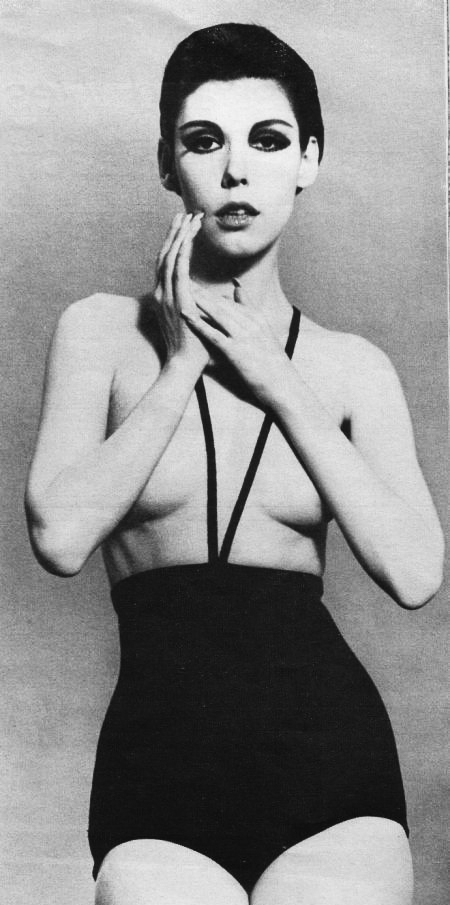What does swimwear say about us? Throughout history the answer to that question has widely varied.
Reflecting not only fashion tastes but also the social and political positioning of women, the simple swimsuit comes with a complex narrative.
In the second part of our series, we take a look at the swimsuit’s evolution over the last one hundred years, from its arrival in Hollywood and the scandalous boom of the bikini to contemporary shapes.
Fashion appeal
Up until the 20th Century, swimwear had been mainly reserved for the purpose of swimming. However, in the late 1920’s it was catapulted into the high fashion realm as designers such as Lanvin, Schiaparelli and Poiret began creating bathing suits to sell in their boutiques in the glamorous resort of Cannes. Featured in the pages of glossy magazines these luxury swimsuits spoke to a shift in lifestyle; the rise of industrialisation and developments in women’s rights gave women more freedom to enjoy sports and leisure time. A forerunner of her time, Coco Chanel has been credited with bringing swimwear into modern fashion. Her woven bouclé one-pieces had her signature unisex design aesthetic. However it was influential sportswear designer Jean Patou who shaped contemporary swimwear, his simple knitted pieces evoked the ease, comfort and liberation of the period.
A model wearing a Jean Patou swimsuit, 1928
Backless boom
As the twenties moved into the thirties a new movement for health and fitness took hold. Considered to be a socially acceptable sport for women, swimming was encouraged as a way to keep in shape. It also provided an opportunity for tanning, which was no longer associated with the working class but rather a marker of affluence as it suggested holidaying in sunny climates. Tanned skin became so fashionable that in 1932, Elsa Schiaparelli designed a backless swimsuit with a built-in bra which allowed line-free tanning. Straps on swimwear also become thinner to let women catch the sun on their shoulders.
Backless swimsuits, 1934
The New Look
When Christian Dior launched his New Look in 1947 the fashion landscape was drastically altered. After years of wartime austerity and military-influenced uniforms dominating, Dior’s ultra-feminine look ushered in a new era of opulence. Cinched waists and full skirts accentuated an hourglass female form. This silhouette also became popular in swimwear.

A feminine swimwear silhouette, 1948
Bikini bombshell
In the late 1940’s swimwear was changed forever when Louis Réard created a skimpy two-piece he called the bikini. Named after the recent nuclear tests on the Bikini Atoll island, Réard believed the design would cause just as much shock and uproar. He was proved right. In fact, so scandalous was his bikini that no model would agree to wear it for the official launch at the Piscine Molitor fashion show in Paris. Instead french dancer Micheline Bernardini was picked to showcase it. Although the bikini grew in popularity it continued to cause a stir. Following the first Miss Universe pageant in London in 1951, it was banned from beauty pageants for being too revealing. Italy also banned the two-piece.

Micheline Bernardini modelling the bikini at the Piscine Molitor in Paris, 1946
Hollywood stars
As the film industry boomed in the 1950’s, so did swimwear. Screen sirens such as Marilyn Monroe and Rita Hayworth popularised the bikini, positioning it as a beach staple. However it was Brigitte Bardot who thrust it into mainstream media when she appeared in the 1952 French film ‘Manina, The Girl in the Bikini’ wearing a strapless two-piece. As the decade progressed, fashion trends became increasingly liberated and the bikini began to be considered as an everyday piece. When Bardot wore a bikini on the beach at Cannes Film Festival in 1957, she cemented the two-piece as the must-have item of swimwear.

Brigitte Bardot at Cannes Film Festival, 1957
The big reveal
Once the bikini took hold, swimsuits continued to get smaller and smaller throughout the second half of the twentieth century. The invention of Lycra in 1958 meant styles were more tight fitting than ever and low-rise bikini bottoms became popular. Big name designers such as Oscar de la Renta and Calvin Klein were selling ready-to-wear swimwear. In 1964 Sports Illustrated launched its debut Swimsuit Issue. The same year, dancer-turned-designer Rudi Gernreich introduced the first topless swimsuit called the monokini. The piece comprised high-waist bottoms with a halter strap and was designed as a protest against female repression. Causing controversy around the globe, it became a symbol of the sexual revolution.
Rudi Gernreich's monokini worn by model and actor Peggy Moffitt, 1964
Thigh high
The swimsuits of the eighties and nineties can be described in two words: high cut. As fashion trends steered towards a bold, powerful look and workout culture took hold, swimsuits were designed to showcase tanned, toned bodies. The hit television show 'Baywatch' popularised one-pieces which featured low, scoop neckline and ultra high-cut legs. Having already swept the beaches of Brazil, the thong swimsuit became de rigueur in the US.

A fashion feature in Women's Wear Daily, 1987
Sustainable swim
One-piece, bikini, barely-there, modest: in today’s world any and every form of swimwear goes. As inclusivity and diversity inform the fashion industry, the emphasis has been put firmly on swimsuits that make the individual feel their very best. But while silhouettes are varied, what they’re made from is undergoing a revolution. Now more than ever the swimwear industry is acknowledging the detrimental impact that manufacturing has on the environment – and we’re making changes. Sustainable fabrics, responsible production processes, circular business models and long-lasting designs are being pushed to the forefront to ensure the next swimsuit you buy hasn’t cost the Earth.

Kōraru Marie bikini from the Coral collection. Shop here.





